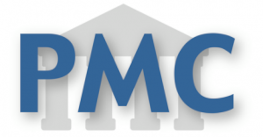Document detail
ID
oai:pubmedcentral.nih.gov:1082...
Topic
Original ArticleAuthor
Quoc, Quang Luu Cao, Thi Bich Tra Jang, Jae-Hyuk Shin, Yoo Seob Choi, Youngwoo Park, Hae-SimLangue
enEditor
The Korean Academy of Asthma, Allergy and Clinical Immunology; The Korean Academy of Pediatric Allergy and Respiratory Disease
Category
Allergy, Asthma & Immunology Research
Year
2023
listing date
2/9/2024
Keywords
significantly serum sst2 airway patients inflammation asthma neutrophilic neutrophils st2Abstract
PURPOSE: Suppression of tumorigenicity 2 (ST2) has been proposed as the receptor contributing to neutrophilic inflammation in patients with type 2-low asthma.
However, the exact role of ST2 in neutrophil activation remains poorly understood.
METHODS: A total of 105 asthmatic patients (classified into 3 groups according to control status: the controlled asthma [CA], partly-controlled asthma [PA], and uncontrolled asthma [UA] groups), and 104 healthy controls were enrolled to compare serum levels of soluble ST2 (sST2) and interleukin (IL)-33.
Moreover, the functions of ST2 in neutrophils and macrophages (Mφ) were evaluated ex vivo and in vivo.
RESULTS: Serum sST2 levels were significantly higher in the UA group than in the CA or PA groups (P < 0.05 for all) with a negative correlation between serum sST2 and forced expiratory volume in 1 second % (r = −0.203, P = 0.038).
Significantly higher expression of ST2 receptors on peripheral neutrophils was noted in the UA group than in the PA or CA groups.
IL-33 exerted its effects on the production of reactive oxygen species, the formation of extracellular traps from neutrophils, and Mφ polarization/activation.
In neutrophilic asthmatic mice, treatment with anti-ST2 antibody significantly suppressed proinflammatory cytokines (tumor necrosis factor-alpha and IL-17A) as well as the numbers of immune cells (neutrophils, Mφ, and group 3 innate lymphoid cells) in the lungs.
CONCLUSIONS: These results suggest that IL-33 induces the activation of neutrophils and Mφ via ST2 receptors, leading to neutrophilic airway inflammation and poor control status of asthma.
ST2 could be a therapeutic target for neutrophilic airway inflammation in patients with UA.
Quoc, Quang Luu,Cao, Thi Bich Tra,Jang, Jae-Hyuk,Shin, Yoo Seob,Choi, Youngwoo,Park, Hae-Sim, 2023, ST2-Mediated Neutrophilic Airway Inflammation: A Therapeutic Target for Patients With Uncontrolled Asthma, The Korean Academy of Asthma, Allergy and Clinical Immunology; The Korean Academy of Pediatric Allergy and Respiratory Disease

Projection-Specific Heterogeneity of the Axon Initial Segment of Pyramidal Neurons in the Prelimbic Cortex
heterogeneity projection-specific

